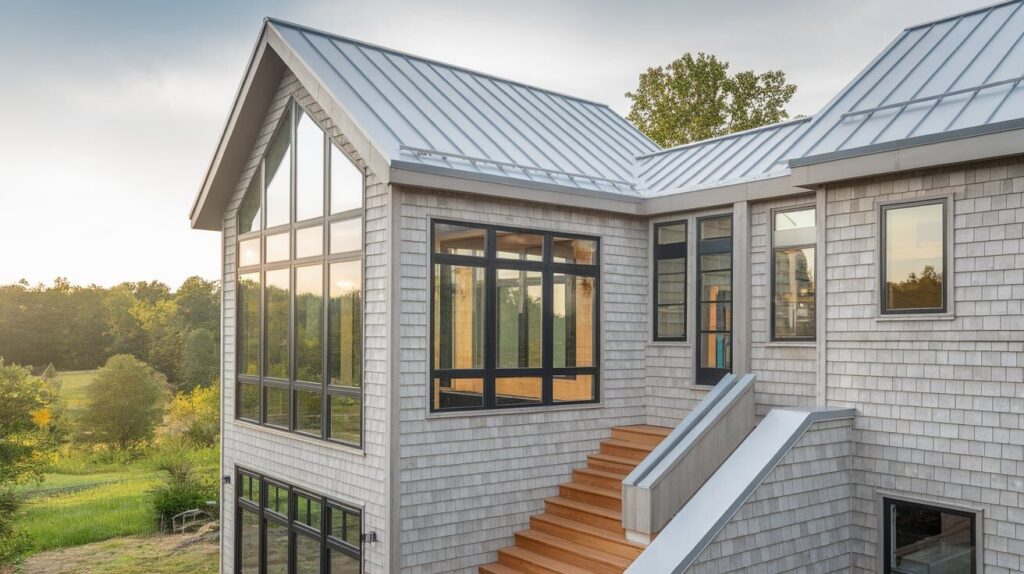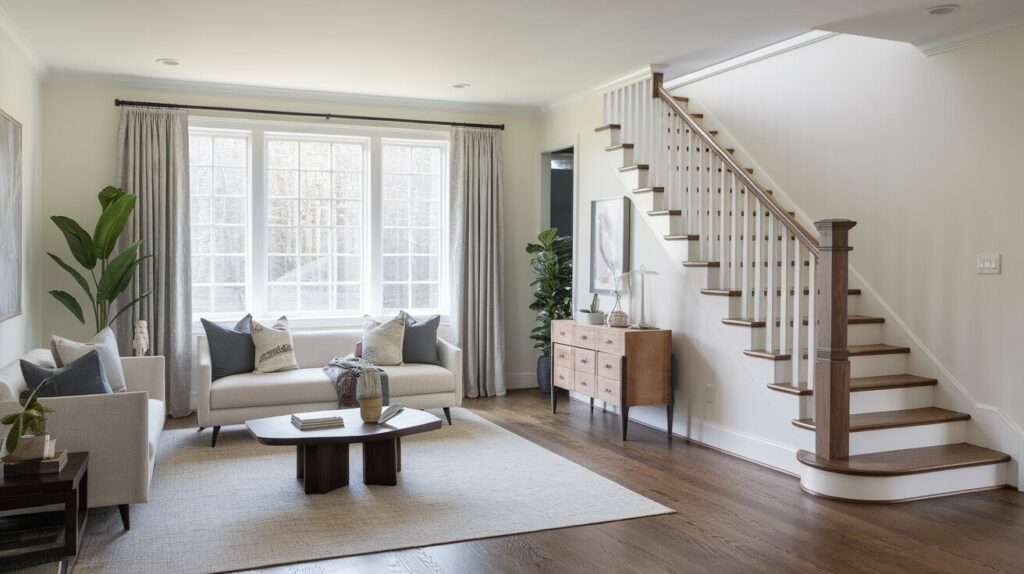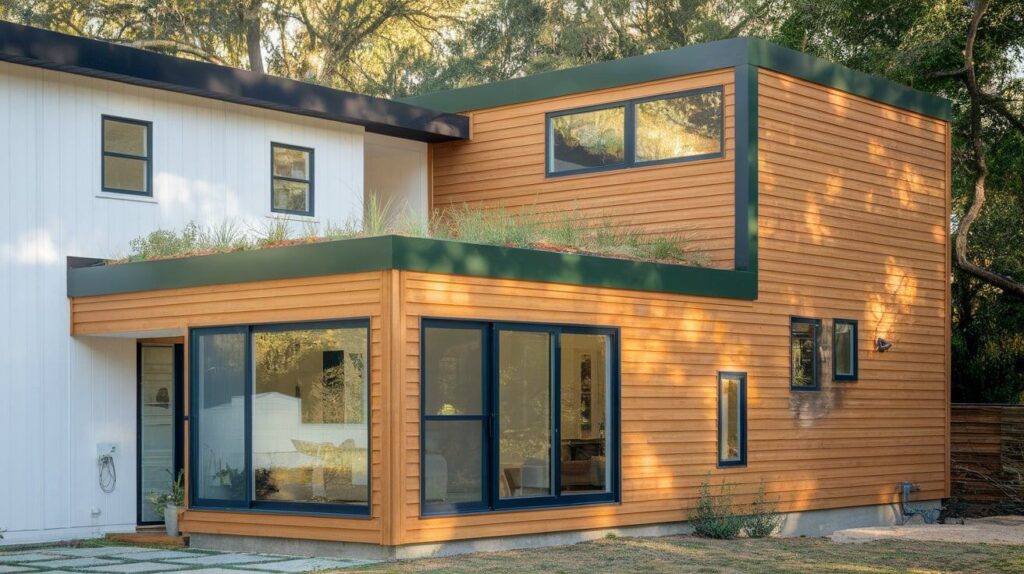Feeling cramped at home? You’re not alone. As families grow and needs change, many of us find our houses suddenly seem too small.
Home additions offer a practical solution to space problems without the stress of moving. By expanding what you already have, you can create the extra room you need while increasing your property’s value.
In this article, you’ll discover 5 smart home addition options that make the most of your existing space. Each idea is designed to give you more room for living, working, or relaxing without breaking the bank.
I’ve helped hundreds of homeowners transform their tight spaces into comfortable homes. From sunrooms to second stories, these additions have been tested in real homes with real budgets.
Whether you need a home office, extra bedroom, or just more breathing room, these five ideas will help you expand your living space the smart way.
5 Smart Home Addition Ideas
Let’s look at five smart ways to add space to your home. I’ve helped many families just like yours create more room without moving. You’ll find options for every budget and need.
1: Sunroom or Four-Season Room

Want a room that feels bright and open? A sunroom might be perfect for you.
Sunrooms add valuable living space that’s filled with natural light. My clients use these rooms for reading nooks, plant havens, or casual sitting areas.
You can use a sunroom in many ways:
- Morning coffee spot
- Indoor garden
- Reading room
- Extra dining area
- Workout space
The big windows connect you to your yard and garden while keeping you comfortable indoors. It’s like being outside without bugs or bad weather!
Key Design Considerations
The glass you choose makes a huge difference. Quality windows matter for comfort in all seasons.
For year-round use, pick double or triple-pane glass. This keeps the room warm in winter and cool in summer.
The room should look like it belongs in your house, not stuck on as an afterthought.
Cost? Most sunrooms run between $20,000 and $70,000. While not cheap, they add clear value to your home when done right.
2: Second-Story Addition

Building up instead of out is smart when you have a small lot.
Going up doubles your space without taking away from your yard. This is huge if you like outdoor living or gardening.
The best part? You create a natural split between living and sleeping areas. Kids upstairs, grown-ups downstairs (or the other way around).
Your yard stays the same size, which saves your outdoor space for fun and relaxation.
What could you put in your new upstairs space?
A master suite gives parents a true retreat. Think bedroom, walk-in closet, and private bath.
Or create multiple bedrooms for kids or guests. Each room can be sized just right for its purpose.
Many of my clients use part of the new space for a home office or craft room. Having work space separate from living space helps with focus.
3: Strategic Bump-Out Expansions

What’s a bump-out? It’s a small addition that extends just a few feet.
Bump-outs cost less than full additions but make rooms feel much larger.
Unlike big additions, bump-outs often don’t need new foundation work. This saves money and time.
They’re perfect when you just need a bit more elbow room, not a whole new room.
Best Rooms for Bump-Outs
Kitchens top the list for bump-outs. Even 2-3 extra feet can fit an island or eating nook.
Dining areas benefit too. A small bump-out might be just enough for a larger table or buffet.
Bathrooms feel luxurious with just a bit more space. Imagine fitting a separate shower and tub where only one would fit before.
4: Existing Space Conversions

Have a basement full of boxes? There’s living space hiding down there!
Modern basements can be warm and bright. No more dark, damp caves.
I recommend:
- Waterproofing first
- Adding plenty of lighting
- Using warm flooring options
- Creating zones for different activities
Good lighting makes all the difference. Mix overhead lights, wall sconces, and lamps for a warm feel.
Look up! Your attic might be wasted space.
Attics make great bedrooms, offices, or playrooms with the right touches.
The key is working with the slopes. Built-in storage under eaves makes use of every inch.
I’ve seen amazing transformations – from dusty storage to cozy bedrooms and home theaters.
Modern insulation keeps these spaces comfortable year-round. No more freezing in winter or baking in summer.
5: Accessory Dwelling Units (ADUs)

ADUs are separate living spaces on your property.
They can be attached or detached from your main house. Think in-law suite or backyard cottage.
They work for so many needs:
- Aging parents
- Adult children
- Rental income
- Home business
- Guest quarters
The best part? They’re self-contained with their kitchen and bath.
Connect your ADU to your home in a way that makes sense. You want easy access but also privacy.
Space planning is crucial in small units. Every square foot must work hard.
Build with good materials from the start. ADUs should be small but not cheap-feeling.
Many of my clients earn back their investment through rental income or by avoiding assisted living costs for family members.
Conclusion
You now have 5 smart options to expand your living space without moving. Whether you choose a light-filled sunroom, a space-doubling second story, a strategic bump-out, a basement or attic conversion, or a versatile ADU, each addition solves space problems in unique ways. Start by matching your needs with the right option, then talk with local contractors for quotes and timeline estimates.
Remember that good planning makes all the difference-take time to consider how each space will function daily. With the right home addition, you can transform your cramped house into a comfortable home that works perfectly for your family’s needs while boosting your property’s value.
FAQs
What’s the most affordable home addition idea?
Basement and attic conversions typically cost less than new additions since they use existing structure. Bump-outs are also budget-friendly, often ranging from $5,000-$30,000 depending on size and complexity.
How long does a typical home addition take to complete?
Most home additions take 2-4 months. Simple projects like bump-outs might take 3-6 weeks, while second-story additions can take 4-6 months. Weather, permits, and material availability affect timelines.
Do I need permits for home additions?
Yes, most home additions require building permits. Requirements vary by location, but generally, structural changes, electrical work, plumbing additions, and changes to your home’s footprint need official approval.
Which home addition adds the most value?
Kitchen extensions and master suite additions typically offer the best return on investment, often recouping 60-80% of costs. Sunrooms and finished basements add functionality but return slightly less value.
Can I live in my house during a home addition project?
For most additions like sunrooms, bump-outs, and basement conversions, yes. Second-story additions and major renovations might require temporary relocation during certain construction phases for safety and comfort.

